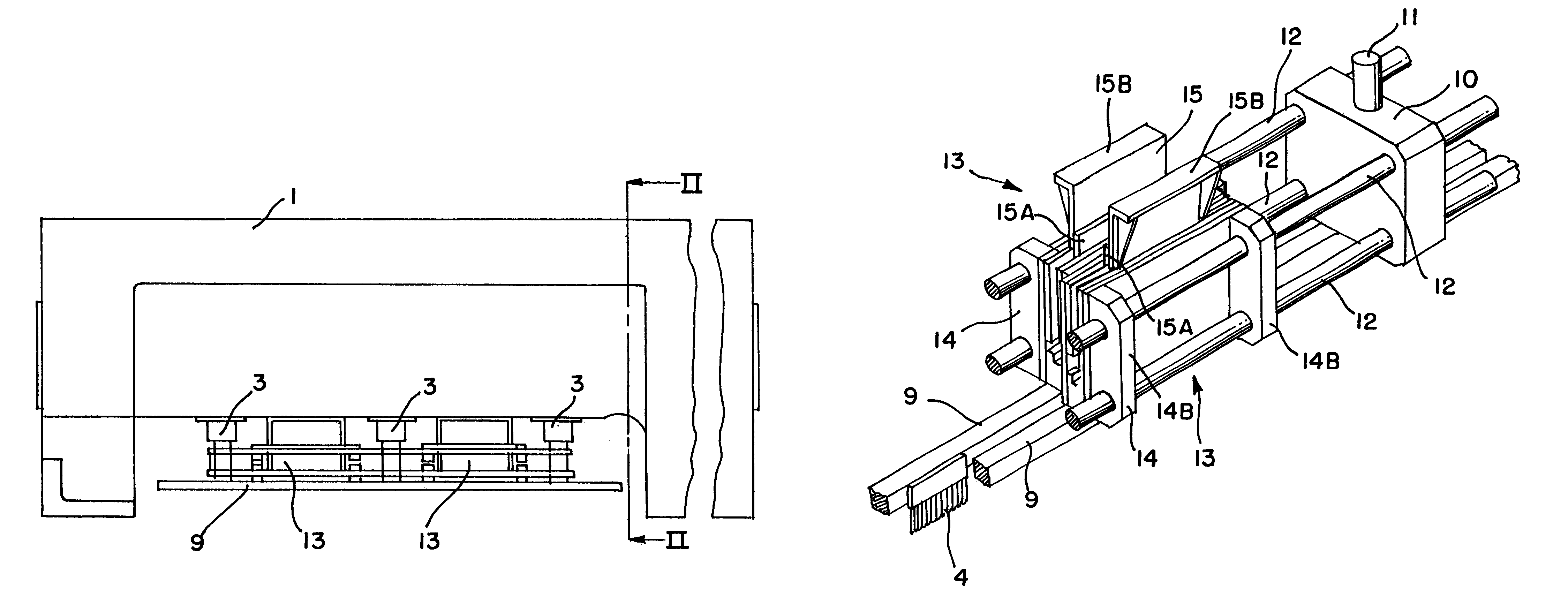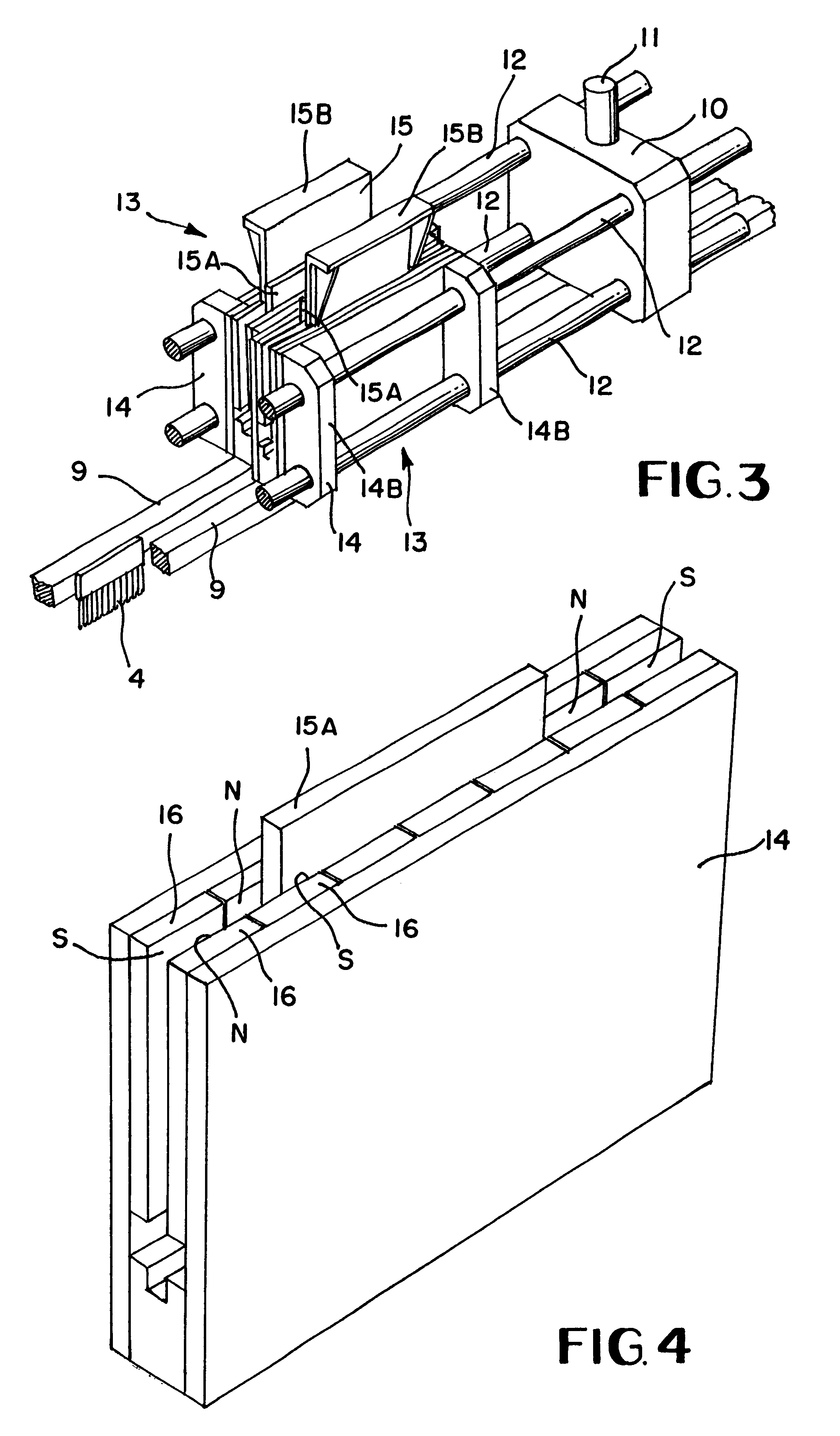Tufting machine with needle bar motor
a tufting machine and motor technology, applied in the field of tufting machines, can solve the problems of limiting the speed capability of the tufting machine, losing any movement in the coupling mechanism between the servo and the sliding needle bar, and many more complex mechanisms for exerting control over the yarn delivery
- Summary
- Abstract
- Description
- Claims
- Application Information
AI Technical Summary
Benefits of technology
Problems solved by technology
Method used
Image
Examples
Embodiment Construction
In most respects, the machine is a conventional tufting machine, so that a detailed description of the tufting operation will not be included here. The machine has a top housing 1 housing the yarn feed mechanism 2, and three reciprocating pistons 3 for reciprocating needles 4. A bottom housing 5 is mounted on legs 6 (neither of which are shown in FIG. 1) as is the bed plate 7 and is provided with a series of rollers 8 for feeding the backing medium through the machine. As the backing medium is fed through the machine, the needles 4 are vertically reciprocated by the reciprocating pistons 3 and cooperate with a plurality of hooks or loopers beneath the backing material to produce a tufted carpet in the conventional manner as is well known in the art.
The apparatus shown in FIGS. 3 and 5 comprises a pair of needle bars 9, each of which have needles 4 connected along their length. Three plates 10 are reciprocally vertically movable by means of a respective push rod 11 driven by a respec...
PUM
 Login to View More
Login to View More Abstract
Description
Claims
Application Information
 Login to View More
Login to View More - R&D
- Intellectual Property
- Life Sciences
- Materials
- Tech Scout
- Unparalleled Data Quality
- Higher Quality Content
- 60% Fewer Hallucinations
Browse by: Latest US Patents, China's latest patents, Technical Efficacy Thesaurus, Application Domain, Technology Topic, Popular Technical Reports.
© 2025 PatSnap. All rights reserved.Legal|Privacy policy|Modern Slavery Act Transparency Statement|Sitemap|About US| Contact US: help@patsnap.com



